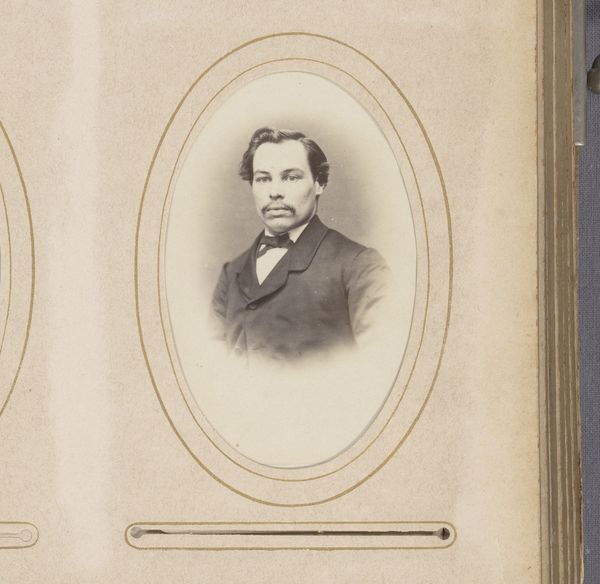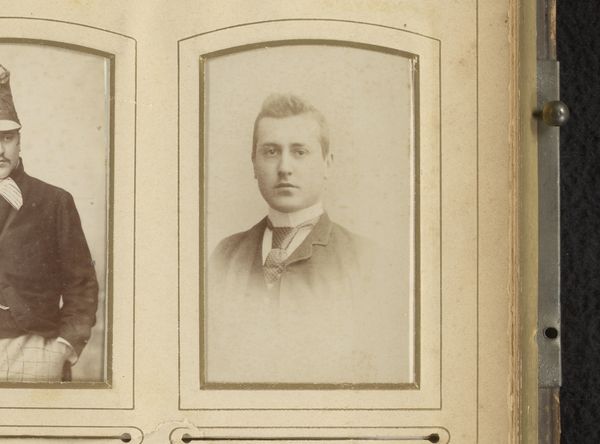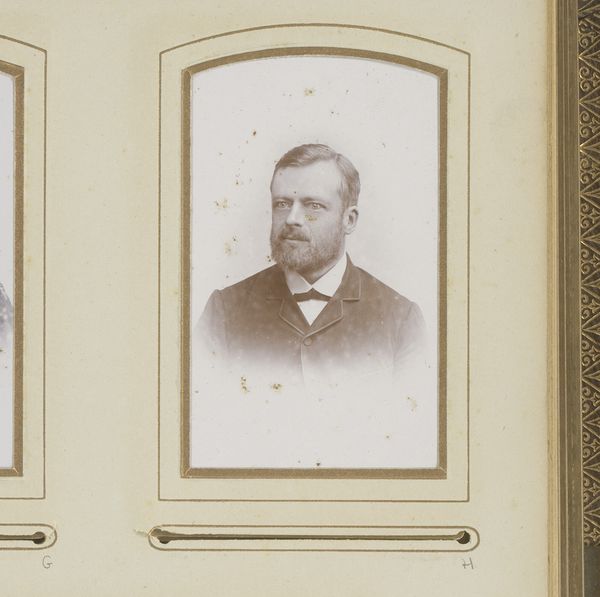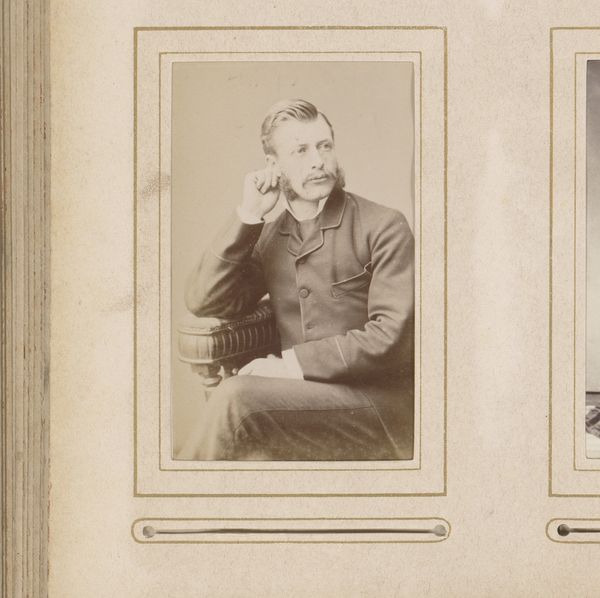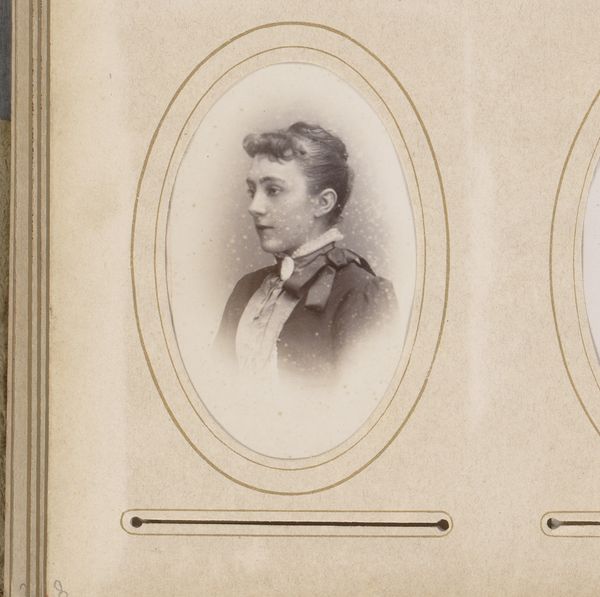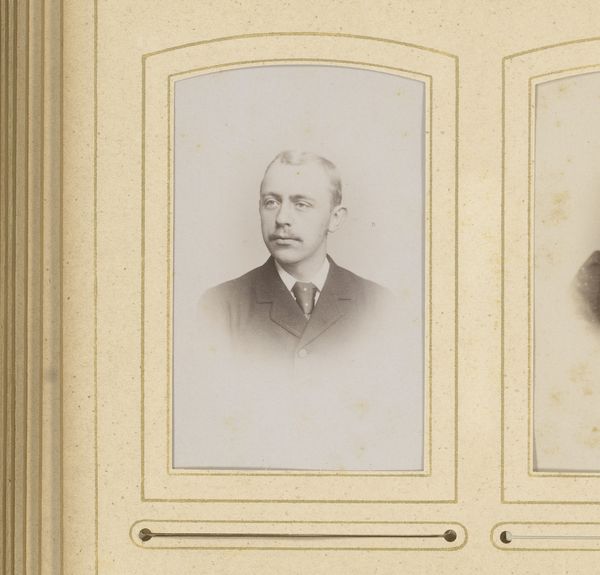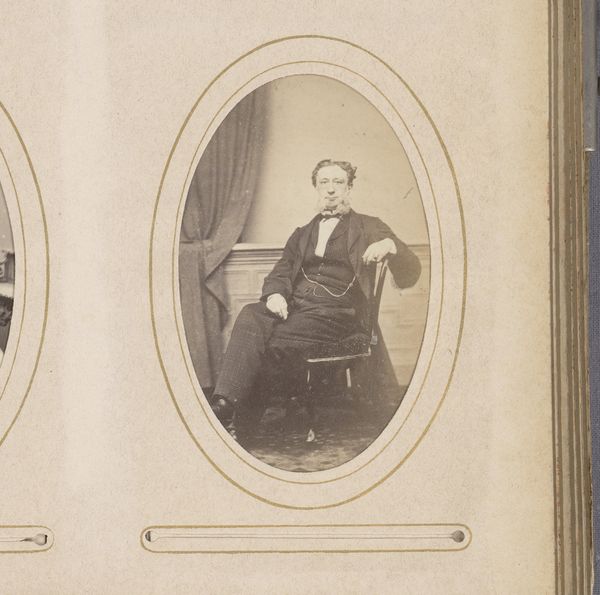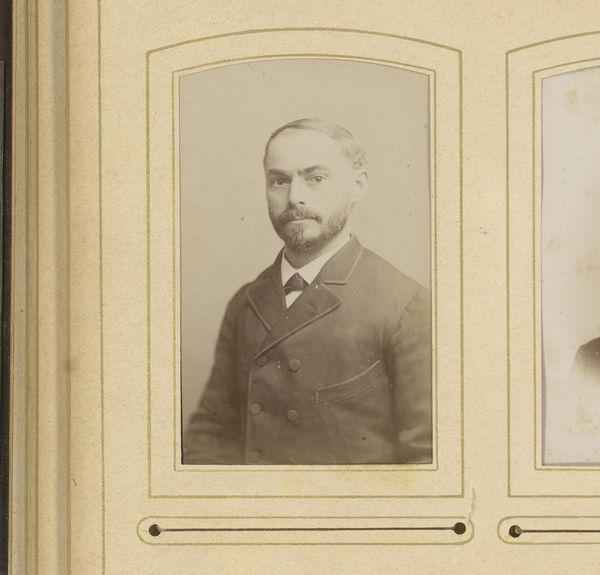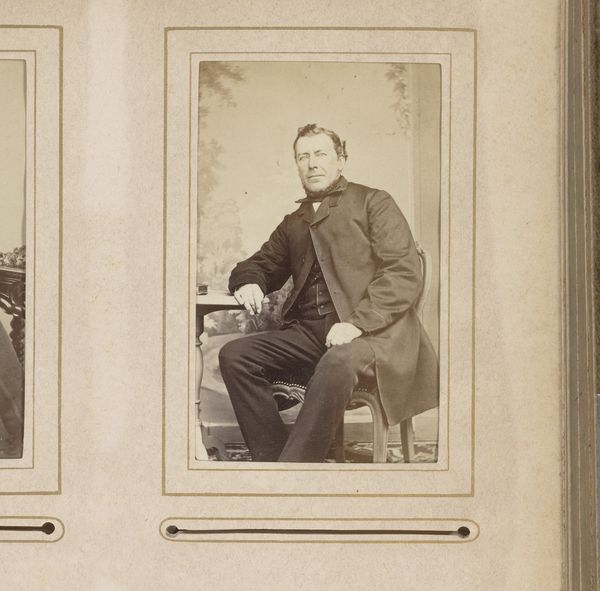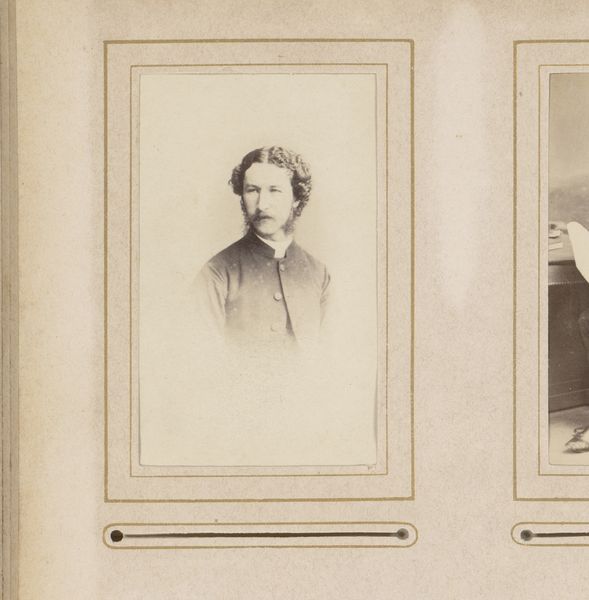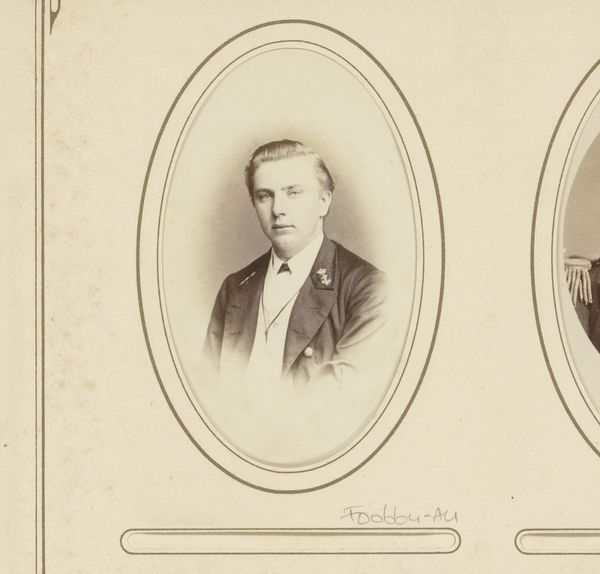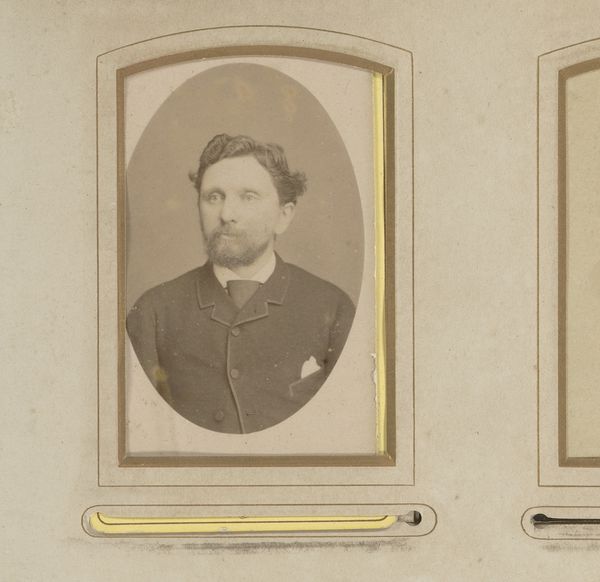
#
aged paper
#
toned paper
#
photo restoration
#
parchment
#
historical photography
#
old-timey
#
19th century
#
warm-toned
#
golden font
#
historical font
Dimensions: height 85 mm, width 53 mm
Copyright: Rijks Museum: Open Domain
Editor: Here we have "Portret van een man met snor" created sometime between 1857 and 1898 by P. Siewers & Zoon. It's a portrait within an oval frame on aged, warm-toned paper, giving it a very antique feel. What strikes me is the man's expression; it seems so…ordinary. What do you see in this piece? Curator: What I see is a complex layering of social expectations and the burgeoning representation of the individual during the late 19th century. The very act of commissioning a portrait, especially in this photographic medium, speaks to a desire for visibility, to inscribe oneself into history. How do we read this desire, understanding that photographic portraits at the time were predominantly accessible to the middle class and above? Editor: That's interesting. So you’re saying this wasn’t just about vanity? Curator: Precisely. Consider the sitter’s attire—a modest suit and tie. It signals a certain level of respectability and adherence to societal norms. But also, this image's existence begs the question: what stories of those excluded from such representation, like the working classes or marginalized communities, are we missing? How does this portrait both reflect and reinforce the power dynamics of the era? Editor: I see what you mean. The seemingly simple portrait becomes a lens through which to examine broader social issues. Curator: Exactly. The image prompts us to critically engage with history. What can we uncover beyond the sitter's face, examining who had access to representation and how they were presented? Editor: I hadn’t considered the implications of who *wasn’t* being photographed. It gives a completely different dimension to understanding art history. Curator: Precisely. It transforms a seemingly passive object into a tool of critical historical inquiry. Editor: I'll definitely be looking at portraiture differently now. Curator: That’s the goal - to see art as actively shaping, reflecting, and challenging our understanding of society.
Comments
No comments
Be the first to comment and join the conversation on the ultimate creative platform.
